2024 Duotone Slick Wing Review | What's New in This Year's Model?
The Duotone Slick has been a favorite of many for several years. Pros love it for its speed, but it's also smooth and easy enough to use for a beginner. It works well in a wide range of riding styles. It's fun and playful, encouraging you to progress your skills. So what's new for 2024, and is it still the same wing we already love? Tucker has ridden it and is ready to share his findings.
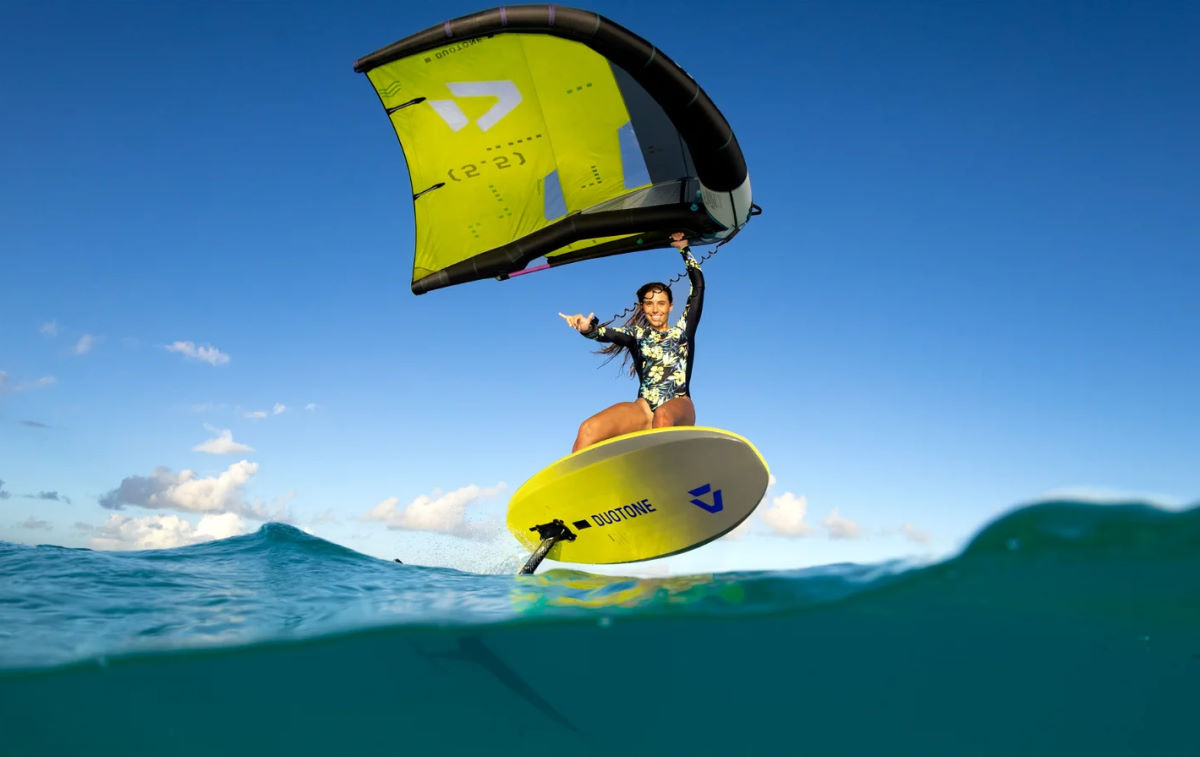
Honestly, not much has changed for 2024, yet it's a more refined version of itself that feels like a level-up from what the Slick has ever been in the past. It's been getting better every year, and this one does not disappoint. It's a wing you can look forward to grabbing for a session.
Features
Surf Handle
In the past, the surf handle was perhaps a bit flimsy, but this year it has been stiffened up quite a bit, and now it gives you lots of control. It barely even flexes anymore. It's sleek and slim and gives you a nice grip with one or two fingers, or even your whole hand. It's close to the wing, yet has enough space for gloves and gives you a very direct feel. Underneath is a nice neoprene patch.
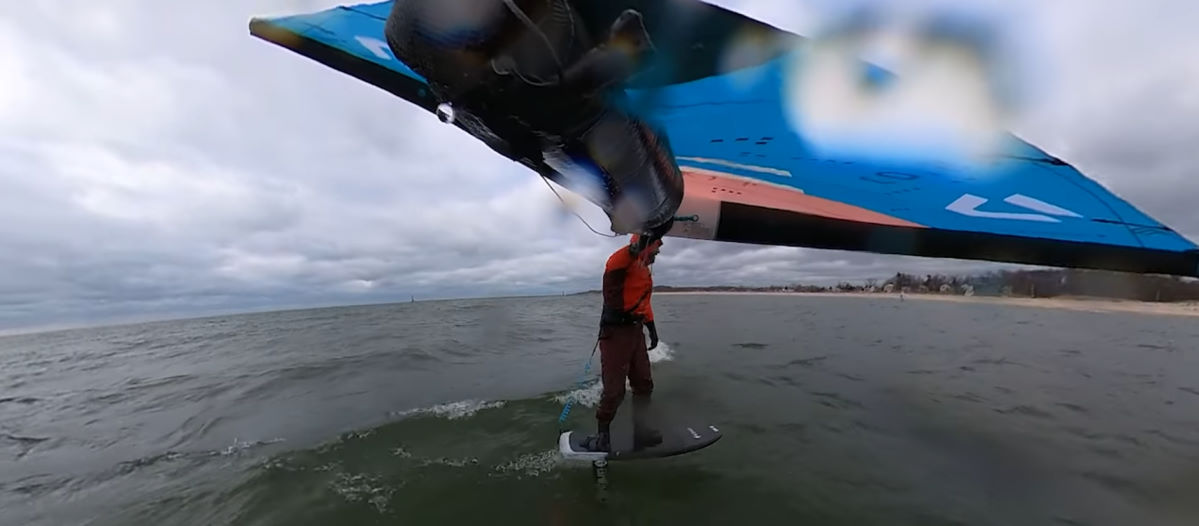
Leash
A leash is not included with Duotone wings, which lets you choose the style and brand you prefer or already own without paying for something that you might not use. The attachment point is right below the surf handle and is nice and secure.
Inflation System
Duotone uses the Airport Valve, which looks similar to a hose end fitting, but is not. If you don't already own this adapter, be sure to pick one or two up. It's always good to have a spare in the car in case the one you pack in your bag gets misplaced.

The Slick uses a one-pump system, but the strut connection does have a lockout so you can isolate the bladders, which is a nice safety feature in case a bladder goes while you're on the water. There is a 9mm dump valve on the side of the strut, as well as out on the wingtip, so it's quick and easy to deflate. Just remember to plug both valves up before pumping up for the next session.

Mini Boom
The Slick uses a Mini Boom. If it's in your budget, the Platinum SLS version is a lightweight and stiff carbon fiber with a narrower diameter, but the more affordable aluminum Sliver Edition is also great. The Mini Boom is special because it's not handles; it's one solid piece so you can grab it anywhere. You can even hold it one-handed in the middle.
If you use a harness line, you have endless options for placement with a boom. You can place it towards the front while controlling the wing with your back hand. You can move it if the wind changes and you need to readjust your balance.
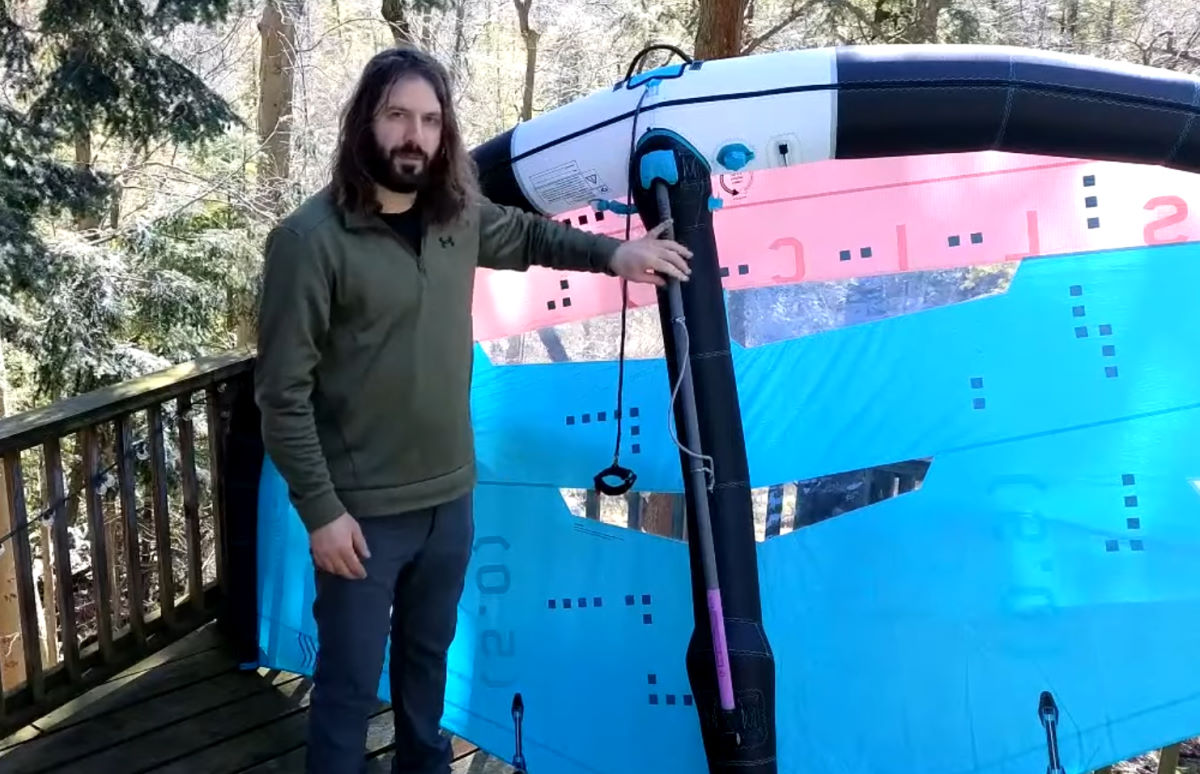
The only real downside to a boom is that you do have to travel with a 4-foot pole that does not break down into two pieces. However, you've probably also got a board with you, so you can always toss the boom in your boardbag and then pack the wing down even smaller than ones with handles permanently attached. Some seasoned travelers actually find the Slick easier to travel with for this reason.
Center Strut
The center strut on the Slick is unique, with a cutaway area to make room for your hands along the length of the boom. The boom is in line with the rest of the strut, which gives you a very intuitive feel to know where the wing and the boom are. It adds one more layer to the ease-of-use you get with the Slick. Other wings with booms don't have this, and it does make a positive difference.
The strut gets much thicker at the front and rear where the boom attaches to it, so there's plenty of contact and control over the torque. It also provides extra flotation when you're sinker starting and lean on the back of the wing to have something to push off of.
Behind the strut is a vented baffle to control the shape of the wing while allowing free airflow across the canopy. This equalizes the pressure on both sides of the strut and makes the canopy feel super smooth and crisp. It's an efficient, speedy design, and Ken and the team have done a great job refining it to this point.
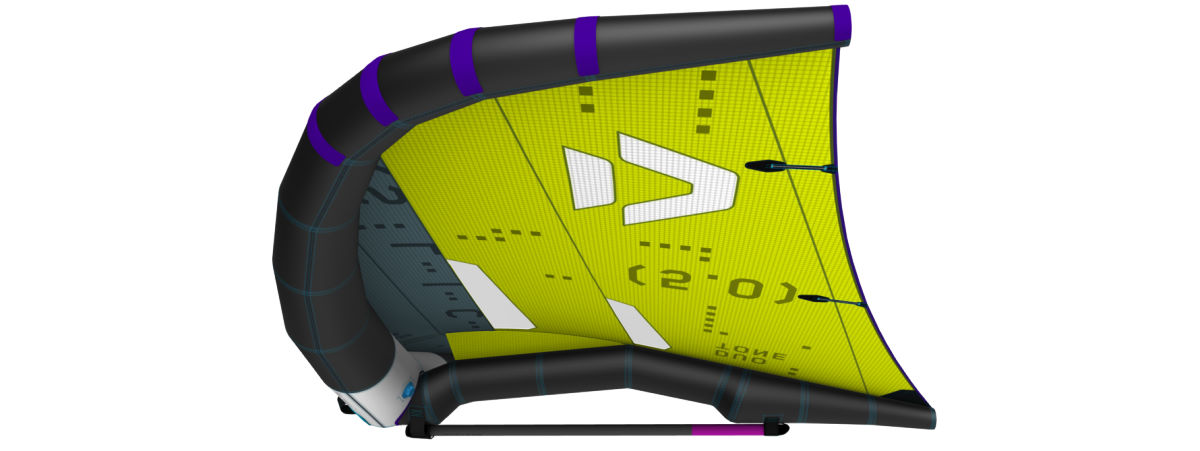
Windows
The windows provide a nice field of view whether the wing is in front of you or up a little higher. Segmenting it into two sections helps when packing the wing down, and the material is durable and will hold up in cold temperatures.
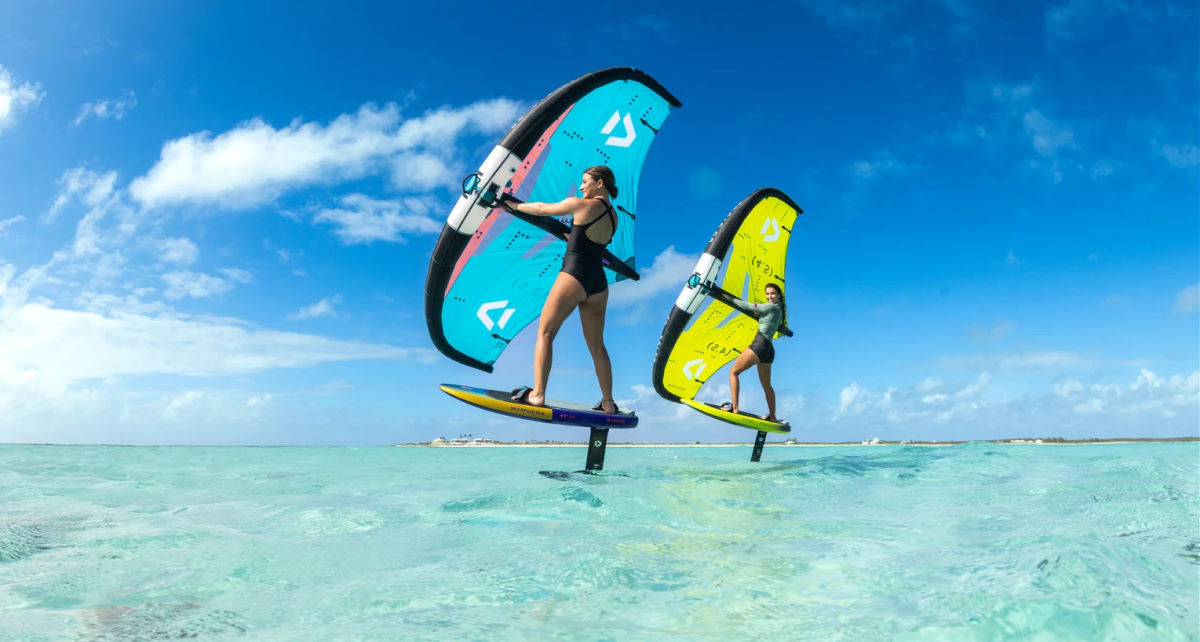
Canopy
The canopy is made from a wing-specific material called MOD3. It's stiff and durable and will maintain its performance level for a long time. If you do get a cut or tear, it's resistant to ripping, so your canopy won't explode in half on you. It's the same material as last year's, but it works so well there isn't any reason to change it.
The colors look great, but there is also an eco-friendly colorway that isn't dyed. It's called Concept Blue, and it reduces the impact dyes have on the environment.
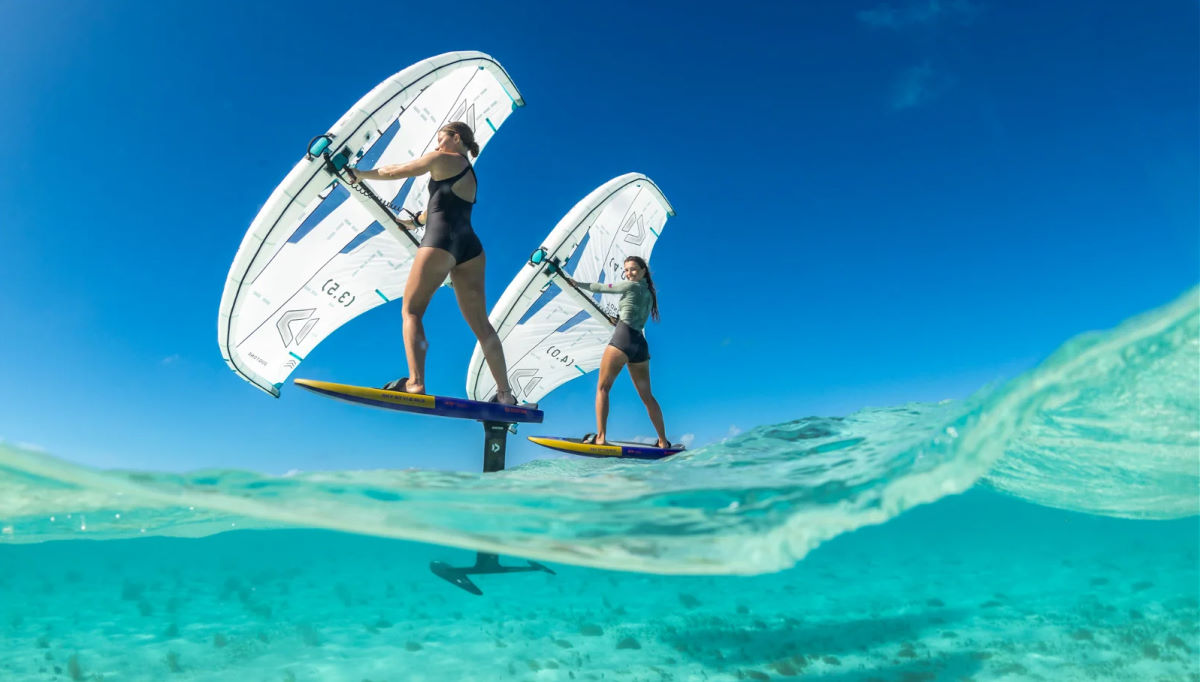
Leading Edge
The leading edge is the main change for 2024. It has a more refined, rounded shape so it's less angular. The wingtips also have a bit more curvature. This gives you a smoother-flying wing that's more efficient and has better upwind. When you tip strike, it's going to release a lot easier since you can just rotate out of it. These changes really have made a big difference in the way this wing flies.
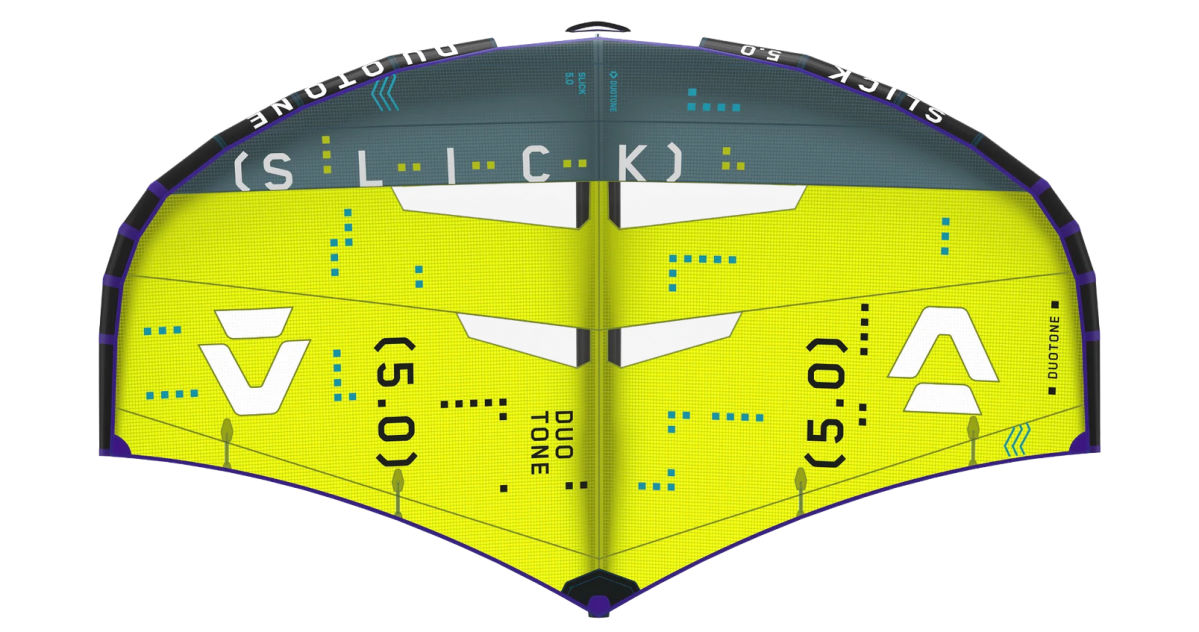
Tucker's Review
Compared to previous years' models, the 2024 Slick is faster and smoother, but you might want to size up slightly. This year the Slick is more forward-pulling, which will create more apparent wind, more board speed, and amplify your speed better. It'll also handle being overpowered more easily and get upwind better. However, when you gain those benefits, the tradeoff is the low-end lift and grunt. The Slick does still have enough, and it's easy enough to get up that it's fine for a first-timer, but you will want to be properly powered. If you're not riding a longer, narrower board, you may want to size up half a meter or even a full meter, especially since it handles being overpowered so well.
The Slick has a better wind range than many wings. You may even be able to get away with just two Slicks to cover the same range as many wings need three to cover.
The surf-ability of the Slick has seen a huge improvement. While it's always been a decent surf wing, with the stiffening of the surf handle and the refined shape, it's so much smoother and more stable now. Combined with the boom, this is a wing you could grab and be happy with it in the surf, especially on a smaller day where you might want to one-hand the wing for a little extra pop or leverage or throwing an air. Having the boom is really handy, especially if you're using the wing actively. It's so intuitive and easy since it's always right where you need it. You don't need to think about the wing; you just have to focus on shredding and having fun.
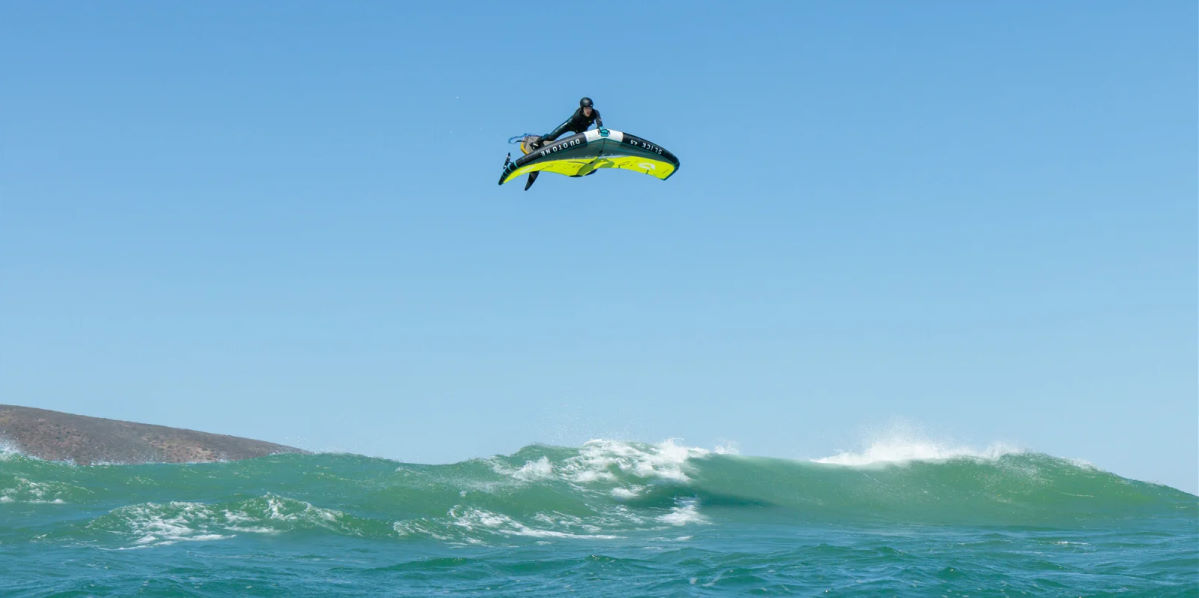
Slick vs. Unit
If you're a more experienced freestyle rider, do you want a Slick or a Unit? That's probably going to depend on your conditions and what you want to do. While the Unit does have that easy jump-ability, loft and pop, the Slick is so much faster and cleaner into the wind, especially for those upwind tricks and spins, that many freestylers gravitate towards the Slick. The boom also improves handling and opens up the possibility of one-handed tricks and handlepass-style maneuvers. Because the Slick is faster, board and foil choices can change as well.
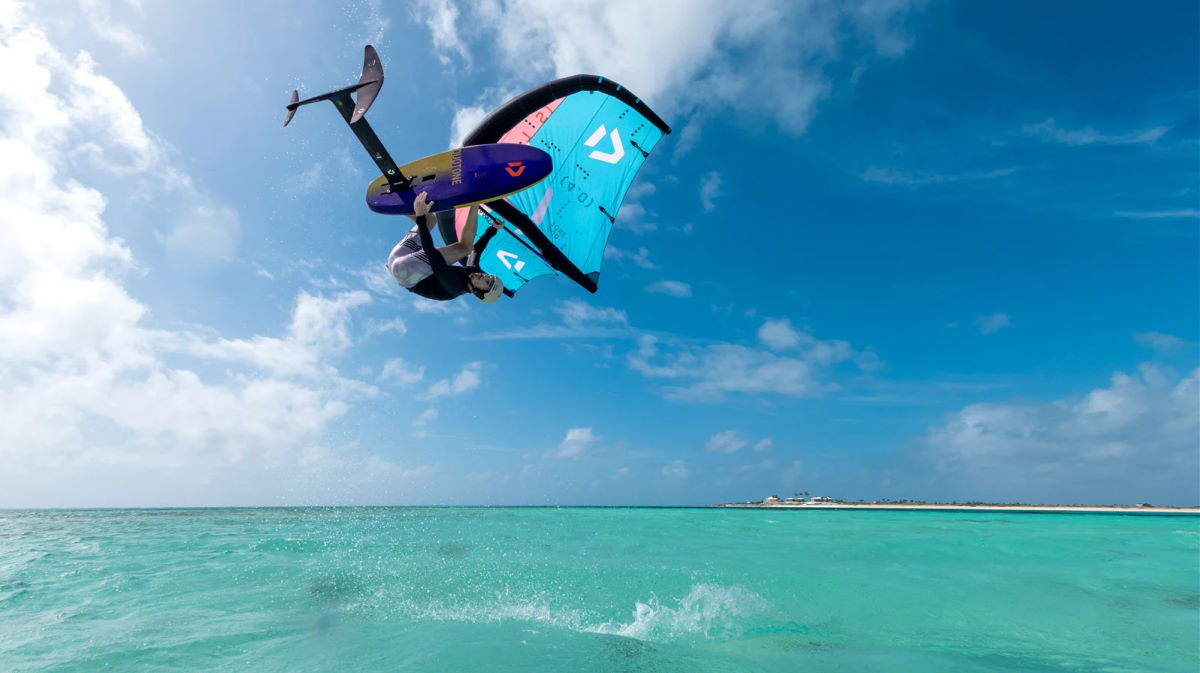
Tucker's Nitpicks
It's hard to find something to complain about with the Slick. It's been through so many refinements over the years that a lot of the kinks have been worked out. However, it does use the Airport valve. It's a great valve and works very well. It's durable and has proven itself over the years. But having to keep a specific adapter on hand that's just for Duotone's wings is a bit annoying, especially since it isn't included in the package. That little part can kill a session if it goes missing.
Also, the deflate valves work fine in warmer temperatures, but once it gets cold, they can be a bit troublesome. They get stiff and it's hard to push them in or pull them out before or after a chilly session. Of course, you can use the inflate valve to deflate, so technically the deflate valves are just a nice time-saving option when they do work properly.
D/LAB vs. Standard
There is a D/LAB version of the Slick with Aluula struts and leading edge. It is next level in terms of lightness, stiffness, and speed, but the average rider isn't going to notice these enough to justify the extra expense. The standard Slick is top-notch in terms of quality and is still extremely light, stiff, and fast. It doesn't flex or taco, even at Tucker's 200lbs. But if you've got the budget for the D/LAB treatment, there are no downsides other than the cost.
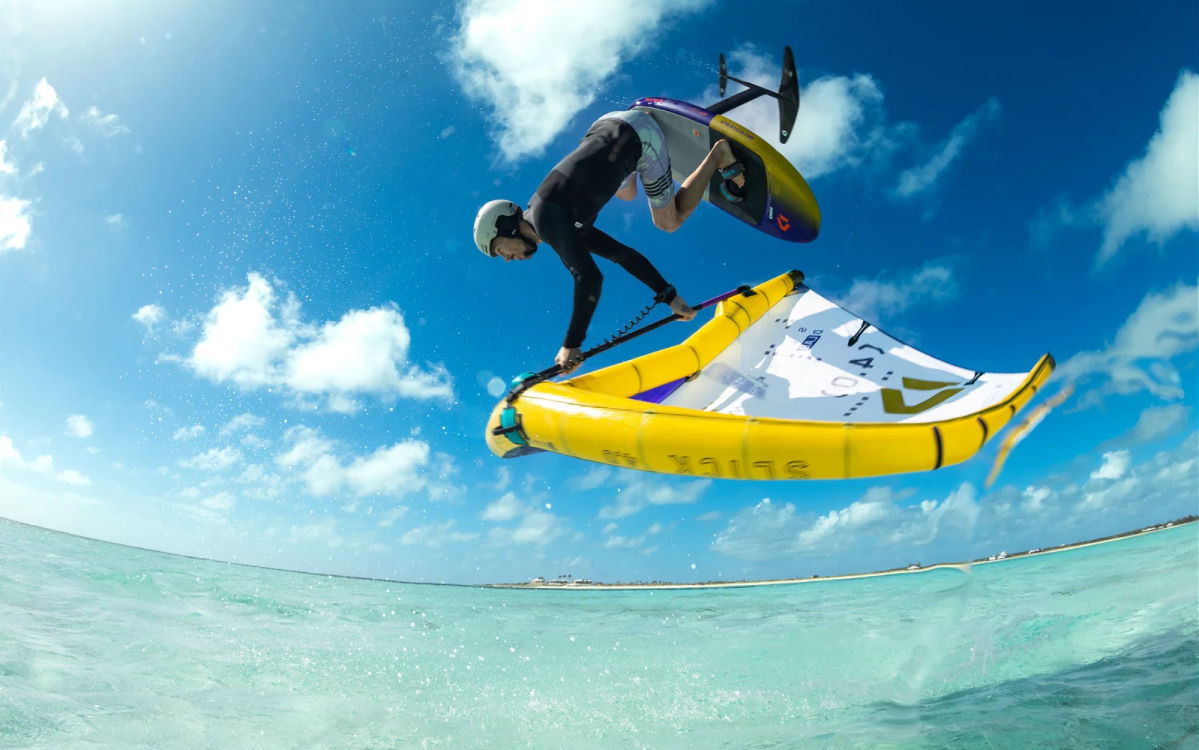
Summary
All the changes to this year's Slick are positive. If you've loved it in the past, you'll love it even more now. You can do anything you want on it, from wave riding to light wind, especially with the right size wing and an efficient board. It's definitely a nice wing to have in the car for whatever the day hands you when you want to get out there and have a lot of fun.
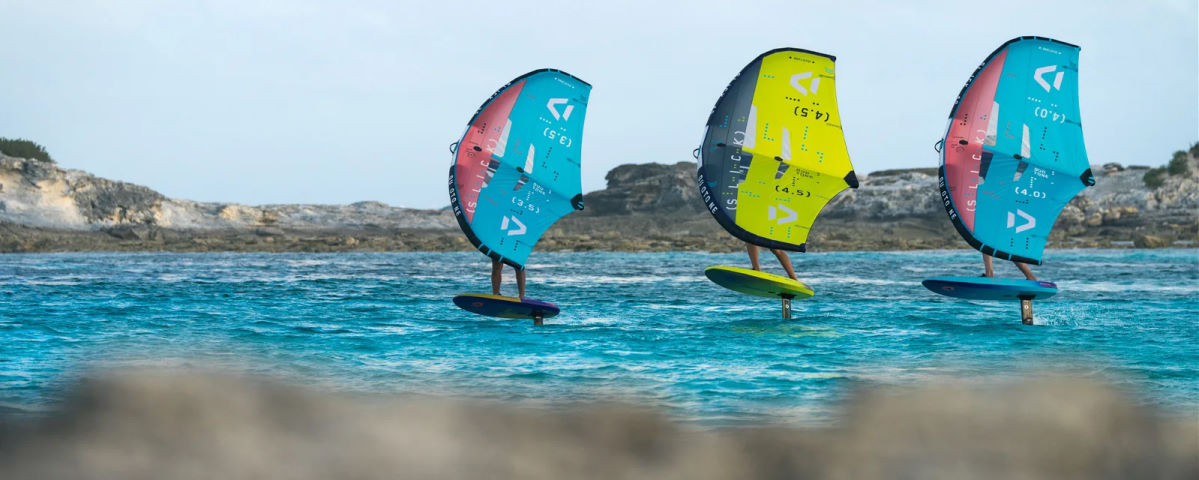
MACkite Subscription Links:
YouTube | Instagram | Spotify Oddcasts
Contact MACkite Below:
800.622.4655 | Kiteboarder@MACkite.com | LIVE Chat Messenger

Recent Posts
-
Ozone's Patent Pending 2024 Fusion Wing | A Dual Skin, Ram Air, Race Machine?
The 2024 Ozone Fusion takes wing design in a very different direction. While other wings are …29th Apr 2024 -
Kiteboarding | Crafting the Harlem Force Kite with Sustainability and Performance
Unparalleled Performance Meets Unmatched Sustainability The kiteboarding industry is on …24th Apr 2024 -
Duotone Ventis 2025 | What's New?
If you're familiar with Duotone's Ventis, you know its specialty is freeriding in light wind …23rd Apr 2024




